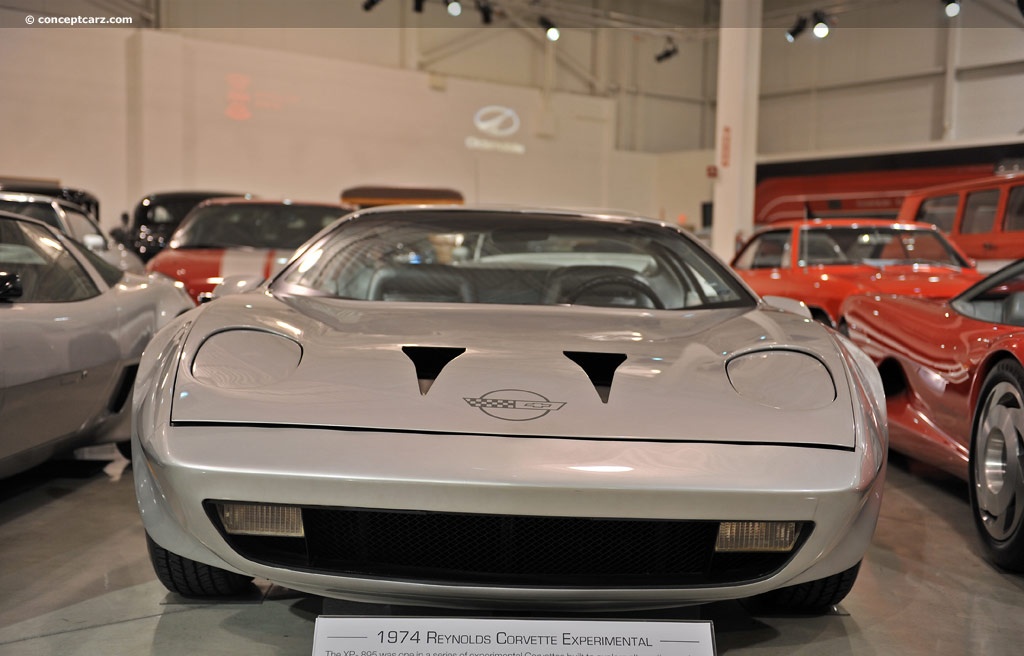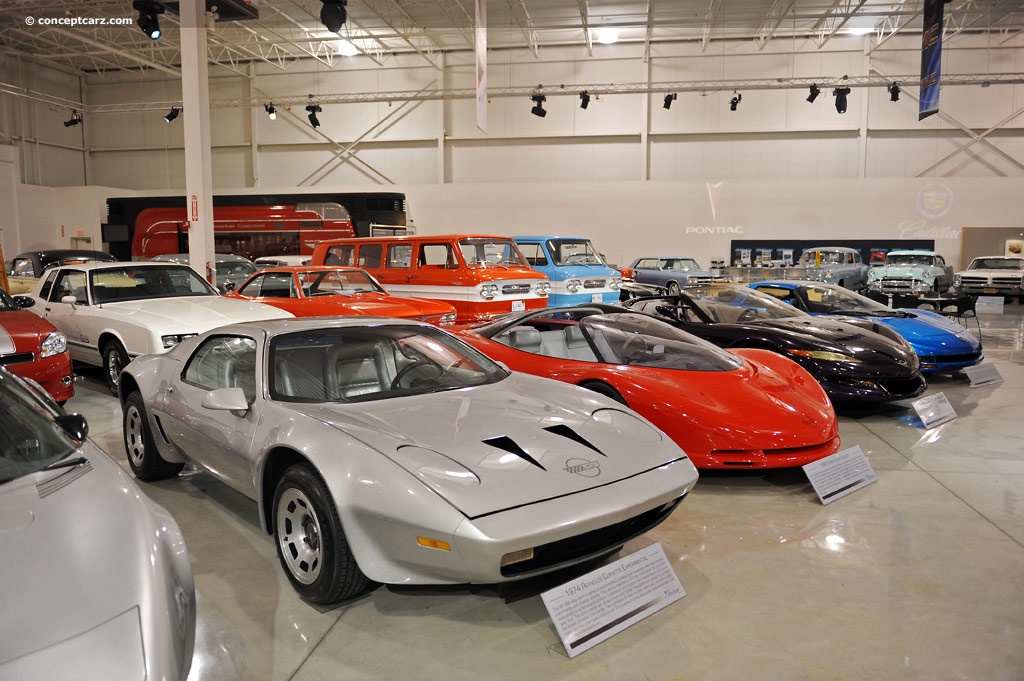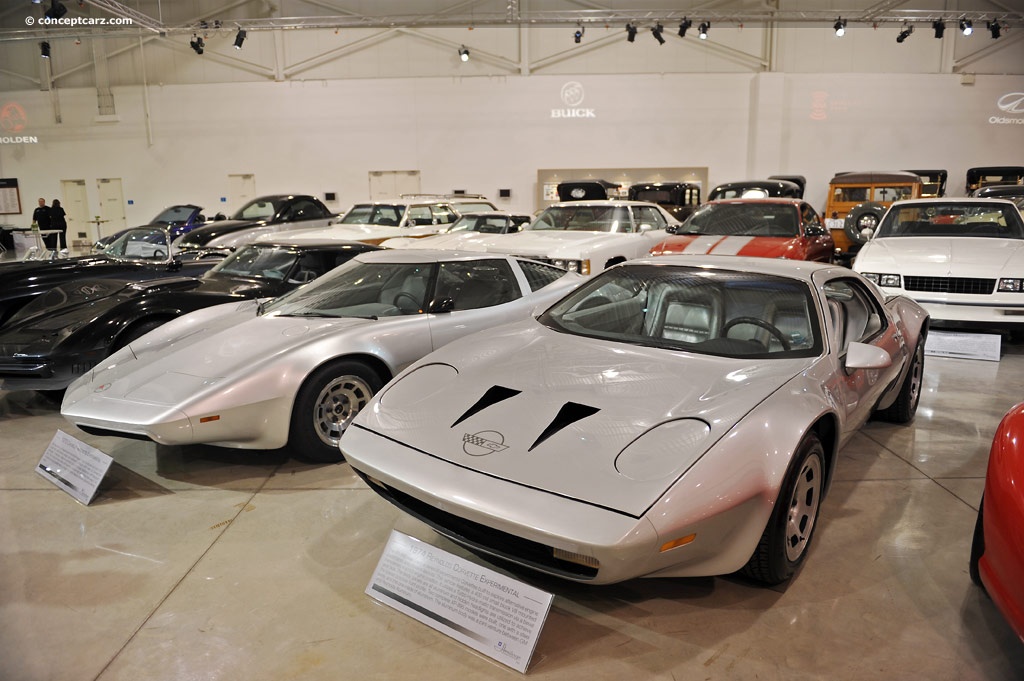Zora Arkus-Duntov has been nicknamed 'Father of the Corvette,' and sometimes erroneously identified as the inventor of the Corvette, but that honor belongs to Harley Early. Arkus-Duntov joined General Motors in 1953 where he transformed the underwhelming Corvette into a proper sports car. In 1957 he became Director of High-Performance Vehicles at Chevrolet.At the 1954 and 1955 24 Hours of LeMans, Arkus-Duntov co-drove a silver 1.1-liter mid-engine Porsche 550 Spyder to First in Class victory. These accomplishments solidified Duntov's belief in mid-engine configuration and fueled his pursuit of adapting this technology to the Corvette. The first stop on his journey was the CERV I (Chevrolet Engineering Research Vehicle), unveiled at the U.S. Grand Prix at Riverside in 1960. The single-seater was designed more for the track than the road. Power was from a 353 horsepower small block V8 with a lightweight aluminum core made of a high-silicone alloy that required no cylinder liners. In comparison to the cast-iron counterpart, the CERV I block was 90 pounds lighter. Lightweight features included magnesium components and a fiberglass body designed by Larry Shinoda and Tony Lapine. Although on the opposite side of practicality, the CERV I was a testbed for future technology that would be applied to the 1963 Corvette Stingray, including the independent rear suspension which used the axle shaft as an upper link. Work began on CERV II in late 1961. Initially, the plan was for a run of six cars that could compete at long-distance events such as Le Mans and Sebring. They were designated the G.S. 2/3 (Grand Sport 2 for two-wheel drive or Grand Sport 3 for four-wheel drive.) Teething problems, increasing costs, and lack of resources led Chevrolet General Manager Bunkie Knudsen to hand the reigns of international racing to Chaparral. As the design and development of the third-generation Corvette was underway, the world was introduced to the Astro II, also known as XP-880. The prior Astro I had been created by the Chevrolet R&D as a mid-engine concept based on Corvair Monza GT. The Astro II was Chevy's response to the road-going version of Le Mans-winning Ford GT40. The popularity of the 3rd Gen Corvette saw sales climb to their highest levels ever in the 1970s, convincing management to stick with the tried-and-true front-engine design. General Motors had a mandatory retirement age and by the early 1970s, Duntov was rapidly approaching that deadline. His proposals for mid-engine Corvettes had been rejected in 1963 and 1968, yet he remained hopeful. He had become chief engineer in 1968 which greatly increased his chances to see his dreams come true. Many hurdles remained to bring the mid-engine idea to production, including tooling costs, limited components and supplies, excessive cockpit noise, and very limited storage space. Some of these problems were addressed with the technology found in the front-wheel-drive Oldsmobile Toronado. By placing the engine sideways and mounting it transversely, the transmission could be located on the side of the engine facing the passenger compartment with the differential on the other side. Prop shafts were run through a tube in the center of the engine's oil pan and connected the transmission with the differential. This arrangement allowed the engine to rest low within the chassis, and by using the lateral space around the engine, more longitudinal space became available, which increased storage space. The XP-882 had made dramatic strides in resolving mid-engine shortcomings, yet doubts remained about expenses, minor performance increases over the traditional Corvette, and a lack of a manual gearbox. Duntov continued to improve upon the concept with the introduction of the XP-895 (a.k.a. Reynolds Aluminum Corvette). Instead of a fiberglass body that had been one of Corvette's most exclusive features since 1953, it wore an aluminum body designed by Reynolds Aluminum. The aluminum skin was 0.125 inches thick and it weighed 400 pounds less than an equivalent steel body. The XP-882 had brought the mid-engine Corvette even closer to reality, but then the tide shifted at GM with the acquisition of the rights to the Wankel rotary engine. A mid-engine Corvette based on the XP-882 with rotary power was viewed as a way to promote this new technology. Two concepts were built, with the first having a very small footprint. Duntov and senior designer Chuck Jordan did not endorse this concept as it lacked the power and character of the Corvette. The second concept was designed under Bill Mitchell's guidance by designers Jerry Palmer and Hank Haga. Dubbed the Aerovette, it had a lower drag coefficient than the XP-882, a fastback roofline, and exotic gullwing doors. A pair of two-rotor units were connected together and mounted transversely, creating a four-rotor engine design and the largest automotive rotary engine ever built. As mid-engine production continued to inch forward, setbacks continue to rise. The Wankel engine had poor fuel economy, leaky seals, had a tendency to run hot, and cost about $250 more than the V8 to produce. After the failed rotary experiment, Chevy returned to the V8 engine. In 1986 came the Corvette Indy, the next chapter in the mid-engine Corvette legacy. Power was from the Chevy 2650cc racing engine, which was then being used in Championship Auto Racing Teams (CART) IndyCar World Series. It had four-wheel drive and active suspension technology developed by Lotus Cars of England, a GM subsidiary at the time. Other technology included four-wheel steering, a rearview camera with in-dash view screen, and drive by wire system.Taking the design even further, Chevrolet introduced the CERV III at the 1990 North American International Auto Show in Detroit. The body was made of carbon fiber, Nomex and Kevlar reinforced with aluminum honeycomb. The twin-turbocharged LT5 V8 engine offered 650 horsepower and was capable of racing from zero-to-sixty in 3.9 seconds with a top calculated speed of 225 mph. A unique pair of automatic transmissions offered six forward speeds and four-wheel drive. During the long mid-engine journey, GM had perfected the concept and resolved many of the shortcomings associated with the radical configuration. Other manufacturers had proven the viability, including the Ford GT40, Ferrari Dino, DeTomaso Pantera, and the American Motors AMX/3. The main concern often revolved around practicality, price point, and disrupting the loyal following of the front-engine Corvette. Management kept coming back to the question, 'why mess with a good thing?' Had the mid-engine Corvette been introduced before it was truly ready, the Corvette legacy may have come to an end many years ago. With the introduction of the C8 mid-engine Corvette, Chevrolet has continued the legacy of the high-performance sports car that is cost-effective, practical, and in-line with the legacy of the Corvette. Duntov's dream of a production mid-engine Corvette has finally been realized.
by Daniel Vaughan | Mar 2020
by Daniel Vaughan | Mar 2020
Related Reading : Chevrolet Corvette C3 History
In 1953 the Corvette was introduced at the Motorama display at the Waldorf Astoria hotel in New York City. It was conceived by Harley J. Earl. It was a two-seat convertible built by GM aimed at capturing the small car market from manufacturers like Jaguar and MG. All 1953 Corvettes were convertibles with black canvas tops, Polo white with red interiors, and built by hand. Power came from an existing....
Continue Reading >>
Continue Reading >>
Related Reading : Chevrolet Corvette History
Very few vehicles elicit the same kind of satisfaction as the Chevrolet Corvette. The Vette is a symbol of childhood dreams and grown-up triumph. The only true American Sports car, this car stands for excellence and became an icon as a high-performance and dynamic sports vehicle. First introduced in January of 1953, the Corvette has only become more renowned as the years drift by. Undergoing many....
Continue Reading >>
Continue Reading >>
Chevrolet Corvette Roars Into Its 60th Year
On June 30, 1953, the first of a new kind of Chevrolet – indeed, a new kind of American car – rolled off an assembly line in Flint, Mich. The car had only two seats. There were no roll-up windows, or exterior door handles, for that matter. Its body wasnt stamped from steel but, rather, molded from reinforced fiberglass. While the postwar Baby Boom was in full swing, this was definitely not....
Continue Reading >>
Continue Reading >>
Corvette's Chassis Innovations Refined on the Race Track
Its been said that racing improves the breed, and when it comes to the Chevrolet Corvette, nearly six decades of checkered flags are the proof. As Corvette marks its 60th anniversary in 2013, the design of the chassis, suspension and other drivetrain features are rooted in the rigors of competition. Candidly, Corvette was not a high-performance car until Zora Arkus-Duntov fitted it with a V-8,....
Continue Reading >>
Continue Reading >>
Chevrolet puts a groove into your ride
Hot summer day… roof top down… wind in your hair … smile in your face… and Little Red Corvette cranked up to its loudest setting. Theres nothing like music in the car to make a journey really fly by. But, did you know that, aside from Princes classic hit, more than 600 songs across all genres and multiple generations mention Chevrolet, Chevy or the name of a Chevrolet vehicle in their....
Continue Reading >>
Continue Reading >>
Chevrolet
Similar Vehicles
 1973 Chevrolet Corvette XP-897GT
1973 Chevrolet Corvette XP-897GT 1970 Chevrolet XP882
1970 Chevrolet XP882 1960 Chevrolet CERV I
1960 Chevrolet CERV I 1964 Chevrolet Corvette XP-819
1964 Chevrolet Corvette XP-819 1986 Chevrolet Corvette Indy Concept
1986 Chevrolet Corvette Indy Concept 1963 Chevrolet Corvair Monza GT Concept
1963 Chevrolet Corvair Monza GT Concept 1968 Chevrolet Astro II
1968 Chevrolet Astro II 1964 Chevrolet CERV II
1964 Chevrolet CERV II 1990 Chevrolet Corvette CERV III Experimental
1990 Chevrolet Corvette CERV III Experimental 1973 Chevrolet Aerovette Concept
1973 Chevrolet Aerovette Concept 2020 Chevrolet Corvette Stingray
2020 Chevrolet Corvette StingrayChevrolet Monthly Sales Volume
March 2023
398,141
1974 Chevrolet Corvette XP-895 Experimental Vehicle Profiles
Recent Vehicle Additions
Related Automotive News

The Mid-Engine Corvette at the Amelia Island Concours d'Elegance
With the recent introduction of the Chevrolet C8 Corvette, the first production mid-engine Corvette sports car, the 2020 Amelia Island Concours dElegance took the opportunity to tell the story of the mid-engine Corvette legacy. The canvas...

Petersen Automotive Museum To Display New Mid-Engine Corvette During Zora Duntov Tribute Weekend
The celebration for The Father of the Corvette will include a display of the new mid-engine 2020 Corvette Stingray, an exclusive VIP reception, Corvette rally, Corvette car show and a panel discussion from July 27 - 28, 2019
LOS ANGELES...

2017 Alfa Romeo Giulia Quadrifoglio Named Best 'Luxury Performance Car' Of 2017 By New York Daily News Autos Team
As the lineups halo model, Giulia Quadrifoglio highlights Alfa Romeos performance and motorsports knowhow with best-in-class 505 horsepower, 0-60 miles per hour (mph) in 3.8 seconds and a record-setting 732 lap time around the legendary Nürburg...

Joe Bortz to Host Historic Dream Car Discussion Panel
Dream car collector and historian Joe Bortz has prepared a special treat for participants at the 40th Annual Pontiac-Oakland Club International Convention in St. Charles Illinois, this coming July 17-21. In addition to bringing his four historic...

Automotive Hall of Fame Inductees Named
Awards to be Presented in Conjunction with the Concours dElegance of America
The Automotive Hall of Fame will present its annual induction and awards ceremony on Thursday, July 26, 2012 as one of the week-long Concours dElegance of America...






















